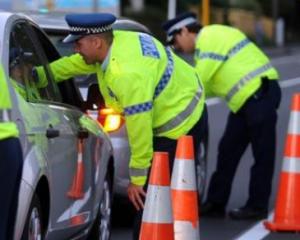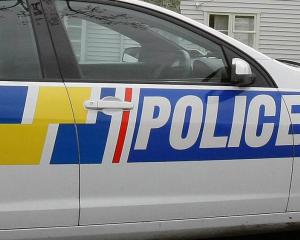A percentage of the population does not yet seem to have got the message: drinking slows reaction speed, dulls judgement, and impairs ability to drive safely.
The Automobile Association says that high blood-alcohol levels rapidly raise the risk of a crash, and injury or death.
Double the level of drunkenness and the risk of a crash is not simply doubled: it is several times over.
For example, an adult over 30 years old is 16 times more likely to cause a fatal crash at the current blood-alcohol limit than someone who has consumed no alcohol.
At double the blood-alcohol limit they are 200 times the risk.
If these facts are not sobering enough then consider the following: drivers impaired by drugs and alcohol do not kill only themselves - for every 100 alcohol/drug impaired drivers who die, about 80 passengers and sober road users die with them, according to Ministry of Transport statistics.
These are national figures, but to bring it closer to home, in the past three years, four people in the Dunedin area have been killed in alcohol-related crashes and 193 people seriously injured.
This year, up until two days before Christmas, 633 people had been processed for drink-driving in the area.
These are shocking figures and demand serious action: it can only be a matter of time before the Government looks again at the blood-alcohol limits for drivers.
Earlier this year, Prime Minister John Key and Transport Minister Steven Joyce rejected calls, following a Law Commission report, to lower that limit from 80 milligrams (mg) per 100 millilitres of blood to 50mg, saying that further research was required.
But the ministry's own figures are clear: it estimates that lowering the limit to 50mg would save between 15 and 33 lives a years and prevent between 320 and 686 injuries annually.
The figures show that as many drivers with a blood-alcohol level of between 50mg and 80mg died in crashes in the past three years as those who were at or just over the limit.
A good number of these telling statistics are canvassed on page 29 of the Otago Daily Times in today's lead feature of the "Summer Times" special holiday edition.
They make grim and salutary reading, but they also reveal how this country's legal framework for drink-driving compares to others.
In the debate between those against lowering the blood alcohol limits and those for it, a balance has to be struck.
At one extreme are those who argue that further constrictions would curtail personal freedoms unduly; at the other that even one death caused in an alcohol-related crash is one too many and that drinking and driving should be banned altogether.
The ideal will lie somewhere in-between.
The question is exactly where.
According to drinkdriving.org, an international drink-drive watchdog, there are only 65 countries out of 262 that have a level of 80mg.
The remaining 197 have lower, or even nil.
Australia's level is between 20mg and 50mg.
How much would reducing the limit from 80-50mg seriously impair people's social lives or impact on their personal freedoms? The answer to that question is presumably at the heart of the further research that the Government wants conducted.
Results of an informal "drinking panel" conducted under the supervision of the Dunedin police's strategic traffic unit by ODT journalists and other volunteers throw up interesting results: of a panel of five, two estimated they required six drinks to be over the limit, one four drinks, one three to four and one three.
It was emphasised throughout that individuals will vary significantly in their tolerance to alcohol depending on, among other things, body weight, levels of fitness, food eaten, sleep the previous night and the time between last drinks and any breath test conducted.
If the anecdotal results are in any way indicative, and there is no reason to suppose they are not, the problem is that for those who have three or four drinks and continue to drive, are then breath-tested but pass the test, the temptation will be to consider themselves "bulletproof" when on another occasion and under different circumstance they may not be.
Regardless, official statistics would appear to suggest the limit could and should be lowered to 50mg.




